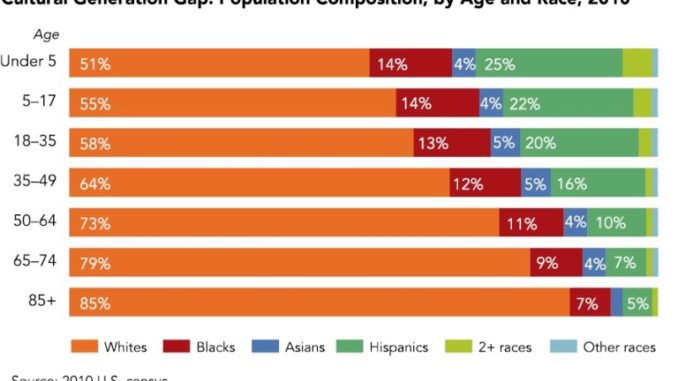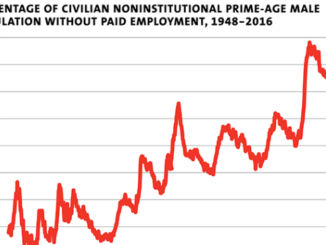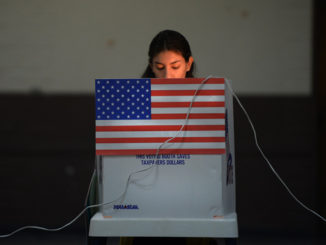
As the waves from the nation’s “Diversity Explosion” ripple out, young generations of new minorities—Hispanics, Asians, and multiracial Americans—are interacting with older minorities and white Americans in their pursuit of opportunities in a country that is in dire need of more youth. As the management textbooks might say, the growth of young, new minority populations from recent immigration and somewhat higher fertility is providing the country with a “just in time” demographic infusion as the largely white U.S. population continues to age.
 Even though great disparities exist in wealth, income, and education between white and minority Americans, I think these demographic shifts are a reason for optimism. Opportunities will increase when the institutional players across our country—politicians, civic leaders, nonprofit leaders, and employers—recognize the potential of this new, more diverse generation.
Even though great disparities exist in wealth, income, and education between white and minority Americans, I think these demographic shifts are a reason for optimism. Opportunities will increase when the institutional players across our country—politicians, civic leaders, nonprofit leaders, and employers—recognize the potential of this new, more diverse generation.
Not least is the benefit to Social Security and other entitlement programs: in contrast to the population of labor-force age in Japan, Germany, Italy, and the United Kingdom—countries with generally older populations, lower fertility, and lower immigration—the U.S. labor-force-age population is projected to grow more than five percent between 2010 and 2030. Yet were it not for new minorities, the country’s labor force would decline by eight percent. Moreover, within the labor force, new minorities add needed youthfulness that brings with it innovation and an entrepreneurial spirit. Projections of the labor force show that in 2030, 54 percent of new minorities will be under age 40, compared to well under half of the rest of the labor force population.

But the benefit from the Diversity Explosion is not certain. To ensure we harness the power of our demographic shifts we need to:
- Pay attention to the needs of the next generation. We need to provide education supports, pathways to the middle class, job training, and federal as well as local support for families.
- Consider how to support the places where minorities are moving but haven’t been before to make sure people access the opportunities they need.
- Ensure that communities and the nation understand the consequences of the fact that, increasingly, the older generation and younger generation seem to vote much differently.
Some may look at these projections and worry about the increased division in our country. But I think that we’re going to change in the future and be open to racial diversity precisely because of this sharp demographic transformation that we’re undergoing. When the civil rights laws were passed in the 1960s, only 15 percent of the population was racial minorities. These minorities were mostly blacks, and they were mostly living in segregated cities. When the 2020 Census is taken, more than 40 percent of the population is going to be racial minorities. They are going to be voting, running for office, and they will be established members of different industries and different communities.
William H. Frey is a Senior Fellow for Metropolitan Policy Program at the Brookings.




